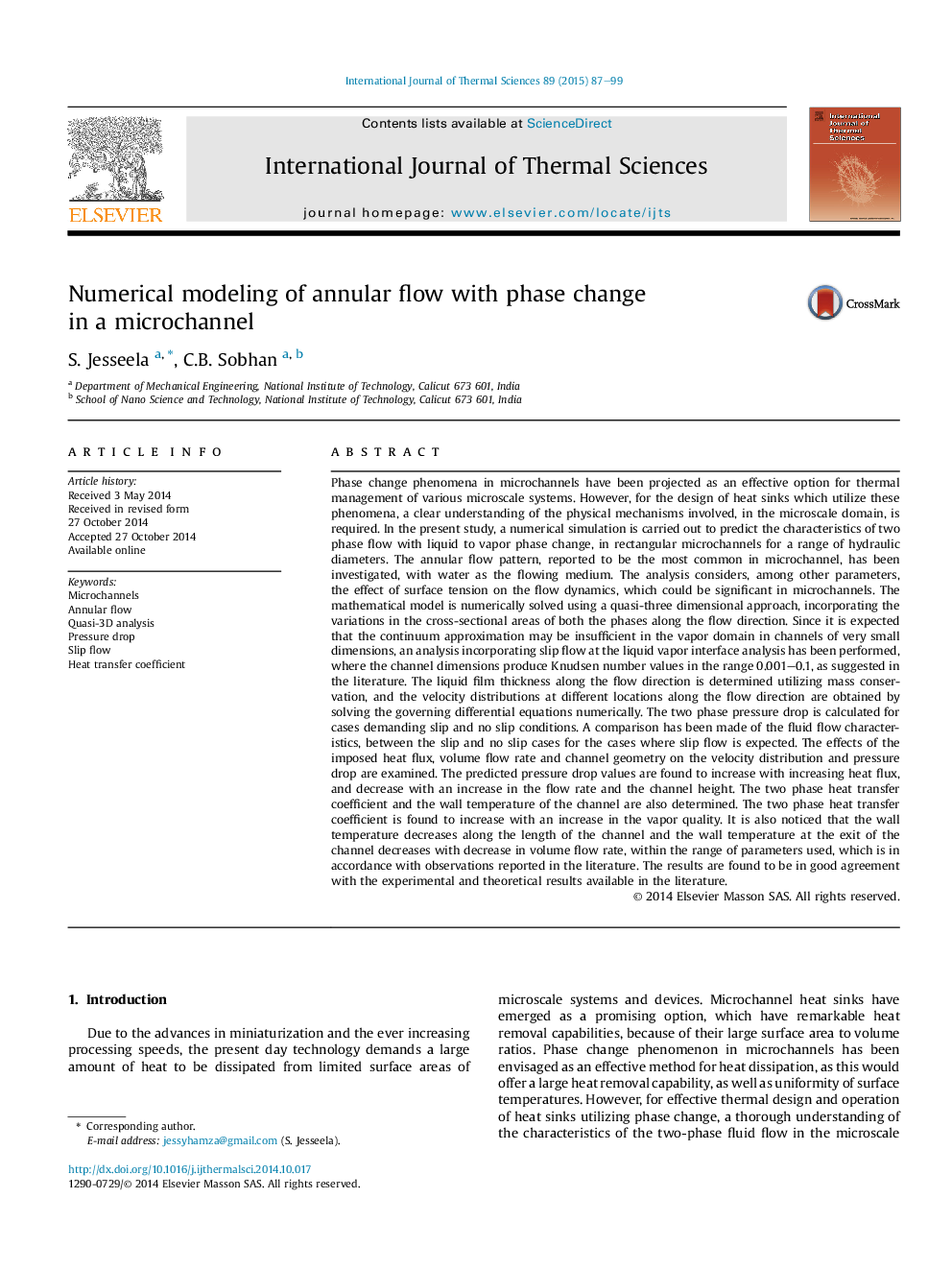| کد مقاله | کد نشریه | سال انتشار | مقاله انگلیسی | نسخه تمام متن |
|---|---|---|---|---|
| 668193 | 1458733 | 2015 | 13 صفحه PDF | دانلود رایگان |
عنوان انگلیسی مقاله ISI
Numerical modeling of annular flow with phase change in a microchannel
ترجمه فارسی عنوان
مدلسازی عددی جریان حلقوی با تغییر فاز در یک میکرو کانال
دانلود مقاله + سفارش ترجمه
دانلود مقاله ISI انگلیسی
رایگان برای ایرانیان
کلمات کلیدی
میکرو کانالها، جریان انحرافی، تجزیه و تحلیل نیمه دیجیتال، افت فشار، جریان لغزش ضریب انتقال حرارت،
موضوعات مرتبط
مهندسی و علوم پایه
مهندسی شیمی
جریان سیال و فرایندهای انتقال
چکیده انگلیسی
Phase change phenomena in microchannels have been projected as an effective option for thermal management of various microscale systems. However, for the design of heat sinks which utilize these phenomena, a clear understanding of the physical mechanisms involved, in the microscale domain, is required. In the present study, a numerical simulation is carried out to predict the characteristics of two phase flow with liquid to vapor phase change, in rectangular microchannels for a range of hydraulic diameters. The annular flow pattern, reported to be the most common in microchannel, has been investigated, with water as the flowing medium. The analysis considers, among other parameters, the effect of surface tension on the flow dynamics, which could be significant in microchannels. The mathematical model is numerically solved using a quasi-three dimensional approach, incorporating the variations in the cross-sectional areas of both the phases along the flow direction. Since it is expected that the continuum approximation may be insufficient in the vapor domain in channels of very small dimensions, an analysis incorporating slip flow at the liquid vapor interface analysis has been performed, where the channel dimensions produce Knudsen number values in the range 0.001-0.1, as suggested in the literature. The liquid film thickness along the flow direction is determined utilizing mass conservation, and the velocity distributions at different locations along the flow direction are obtained by solving the governing differential equations numerically. The two phase pressure drop is calculated for cases demanding slip and no slip conditions. A comparison has been made of the fluid flow characteristics, between the slip and no slip cases for the cases where slip flow is expected. The effects of the imposed heat flux, volume flow rate and channel geometry on the velocity distribution and pressure drop are examined. The predicted pressure drop values are found to increase with increasing heat flux, and decrease with an increase in the flow rate and the channel height. The two phase heat transfer coefficient and the wall temperature of the channel are also determined. The two phase heat transfer coefficient is found to increase with an increase in the vapor quality. It is also noticed that the wall temperature decreases along the length of the channel and the wall temperature at the exit of the channel decreases with decrease in volume flow rate, within the range of parameters used, which is in accordance with observations reported in the literature. The results are found to be in good agreement with the experimental and theoretical results available in the literature.
ناشر
Database: Elsevier - ScienceDirect (ساینس دایرکت)
Journal: International Journal of Thermal Sciences - Volume 89, March 2015, Pages 87-99
Journal: International Journal of Thermal Sciences - Volume 89, March 2015, Pages 87-99
نویسندگان
S. Jesseela, C.B. Sobhan,
